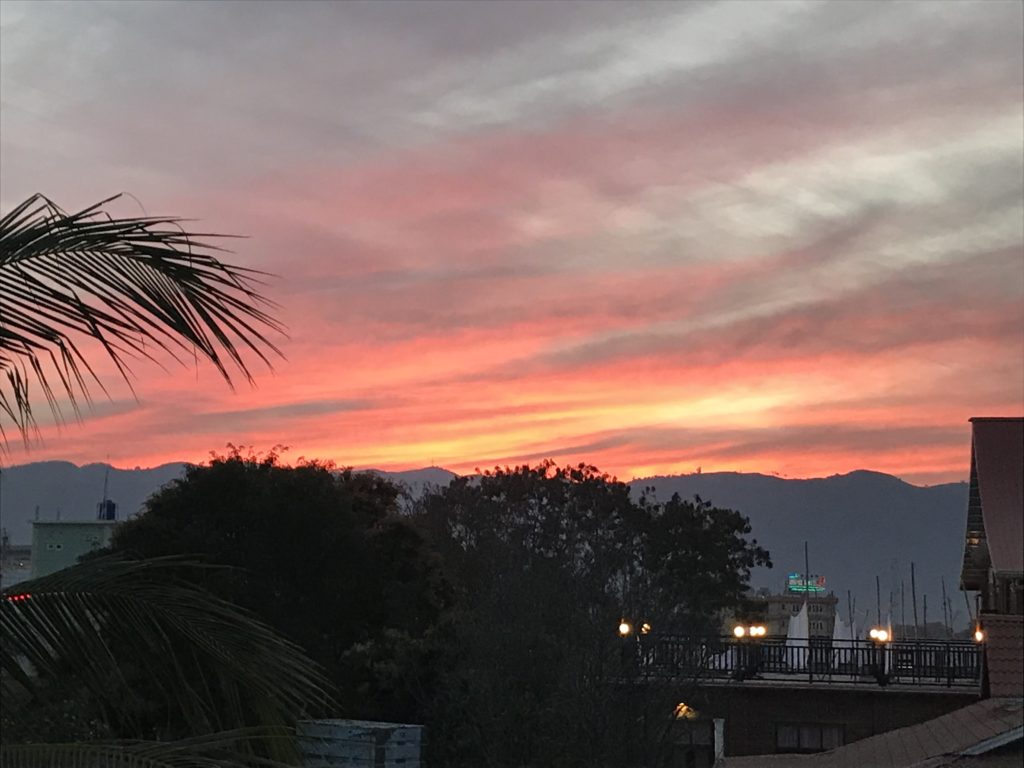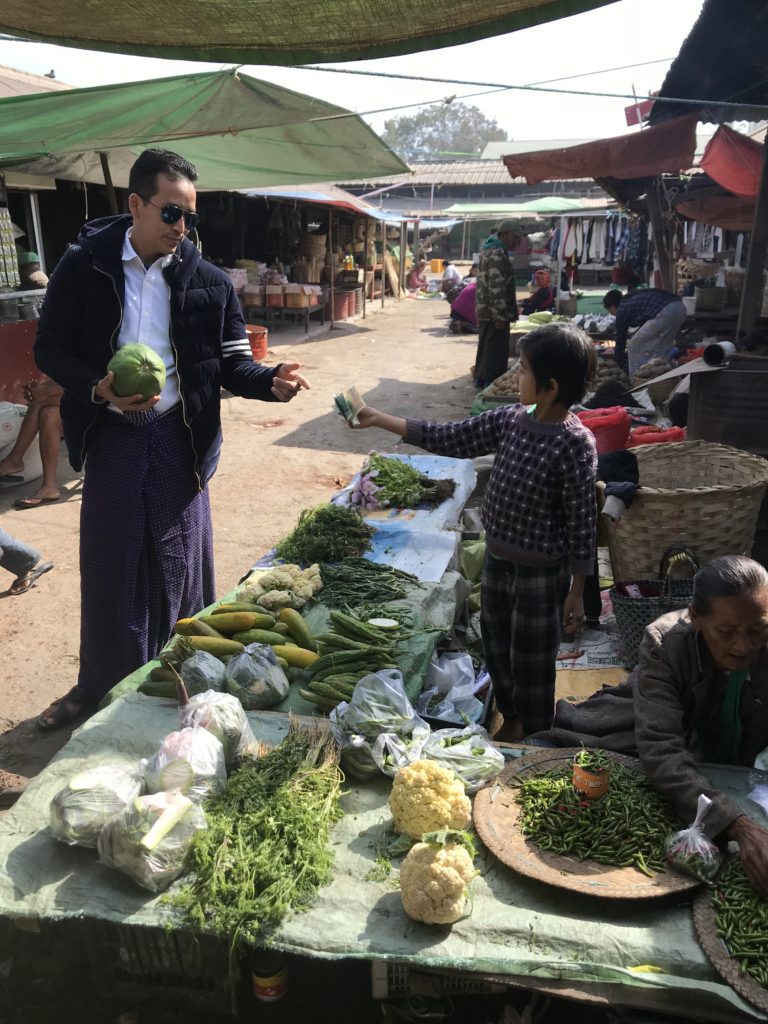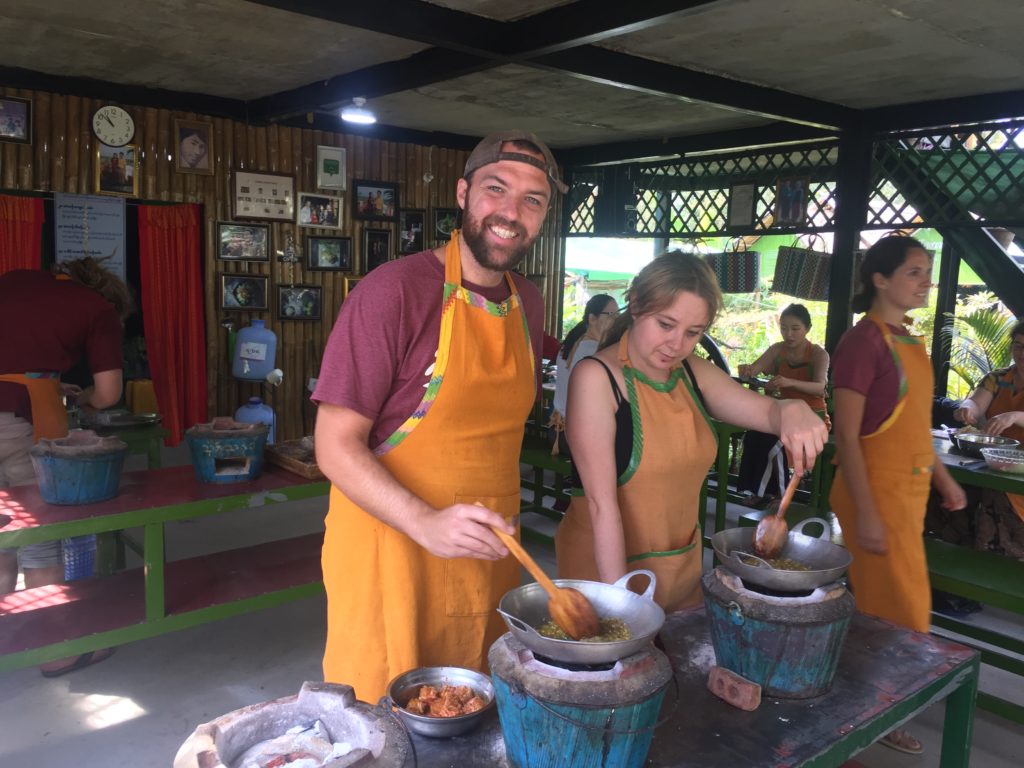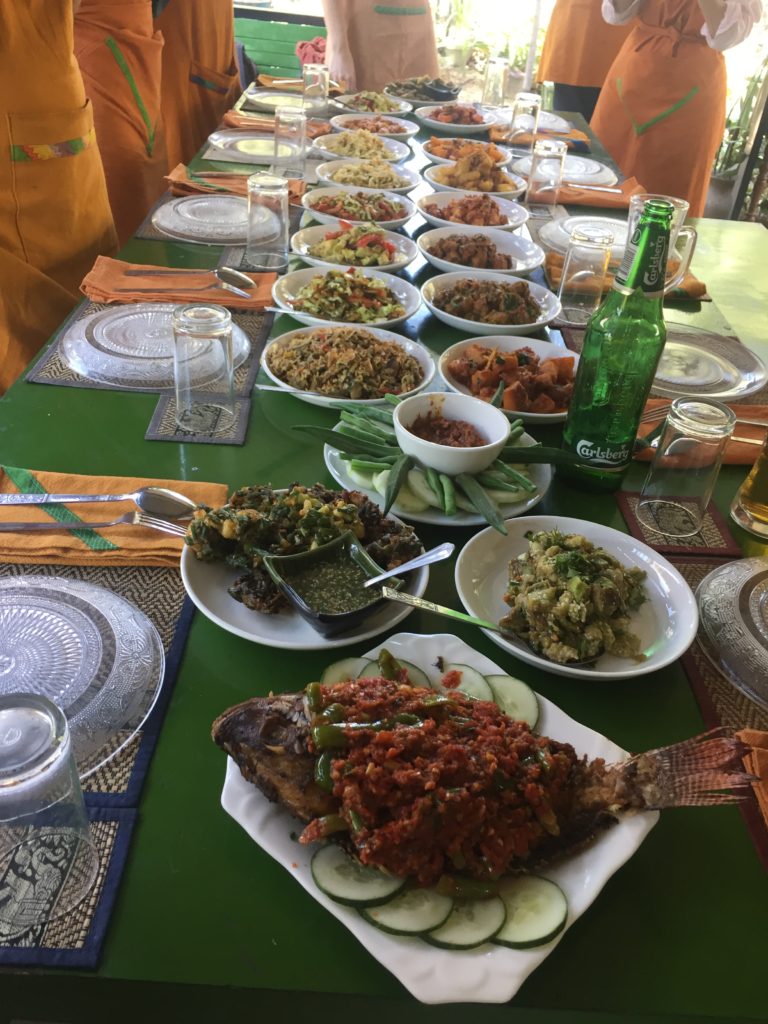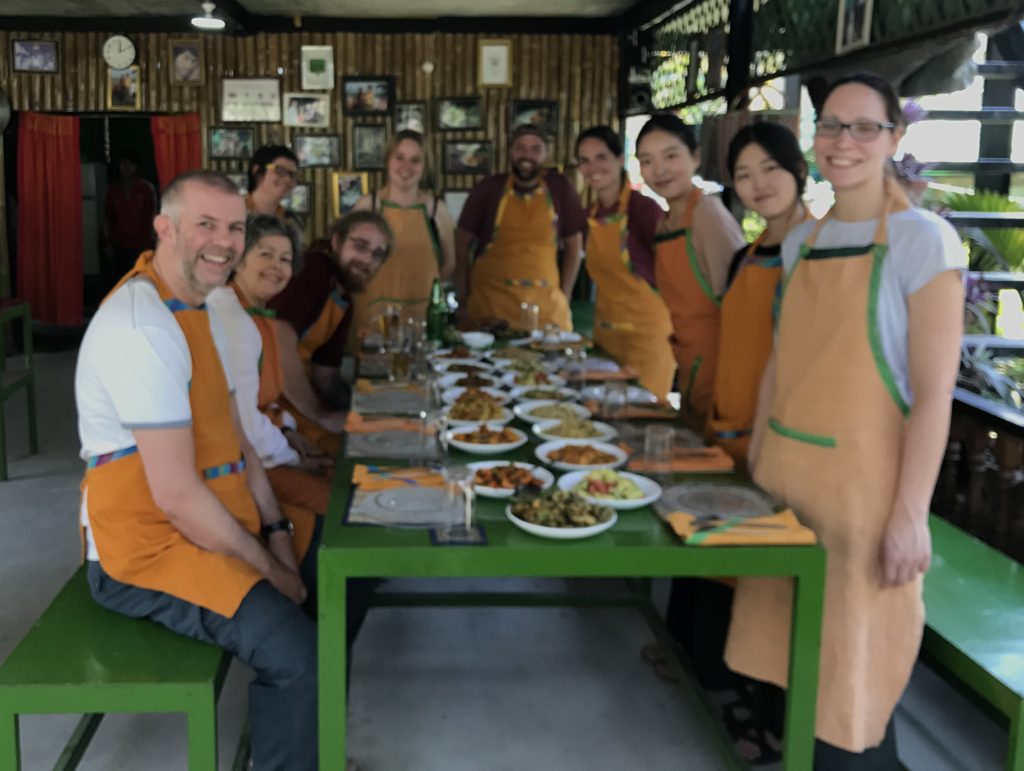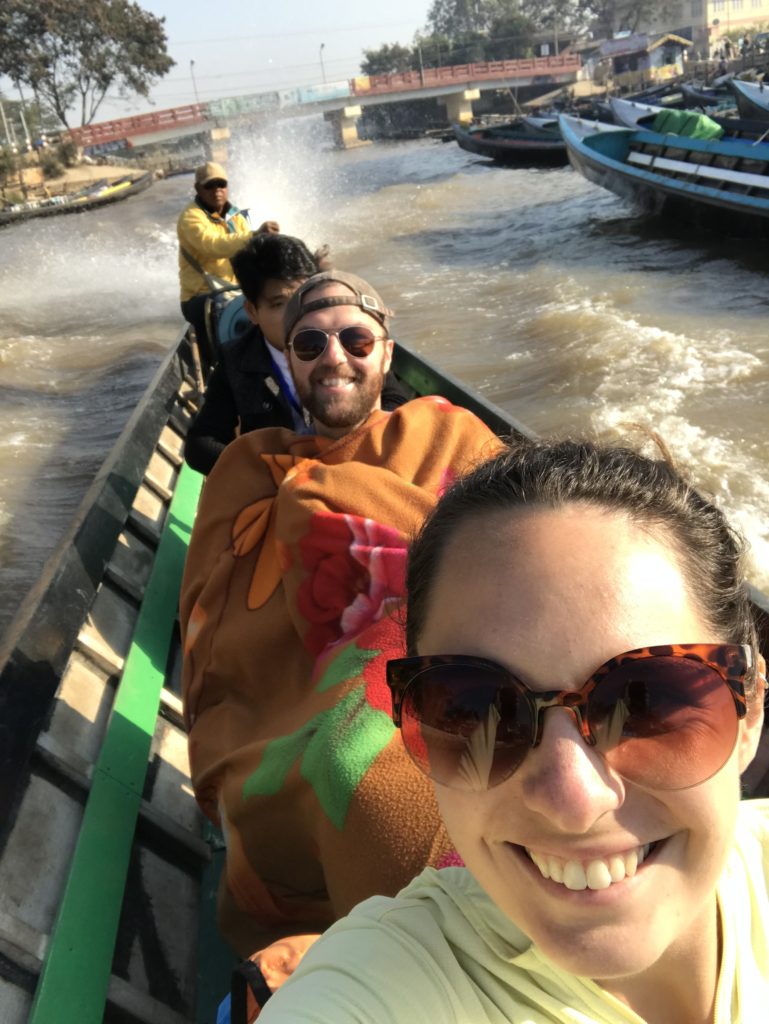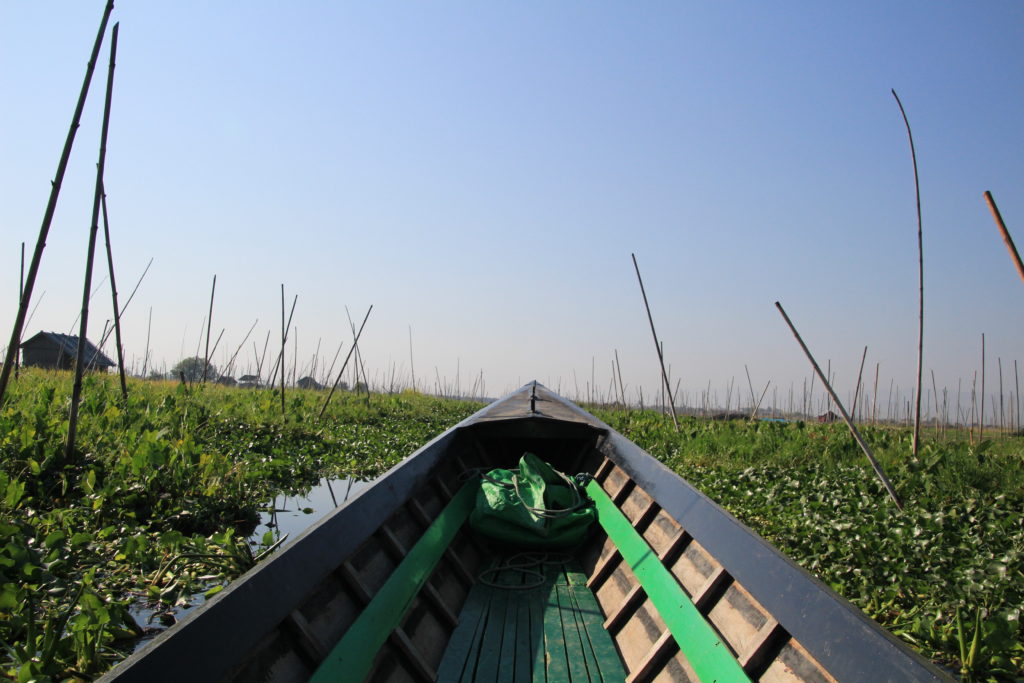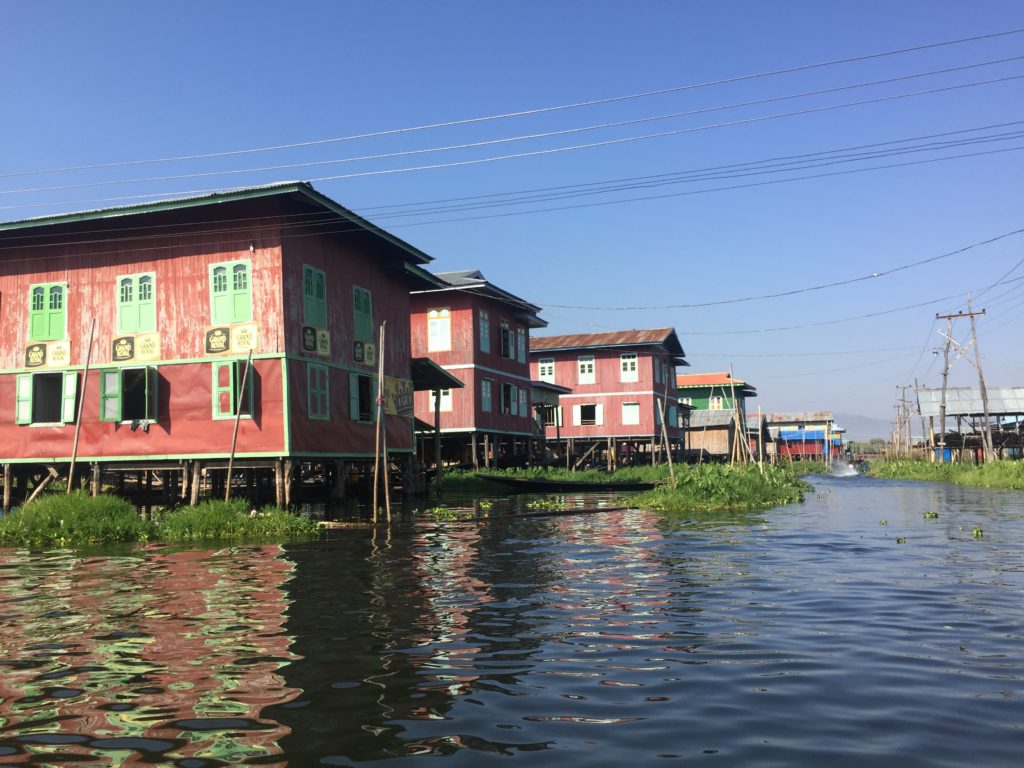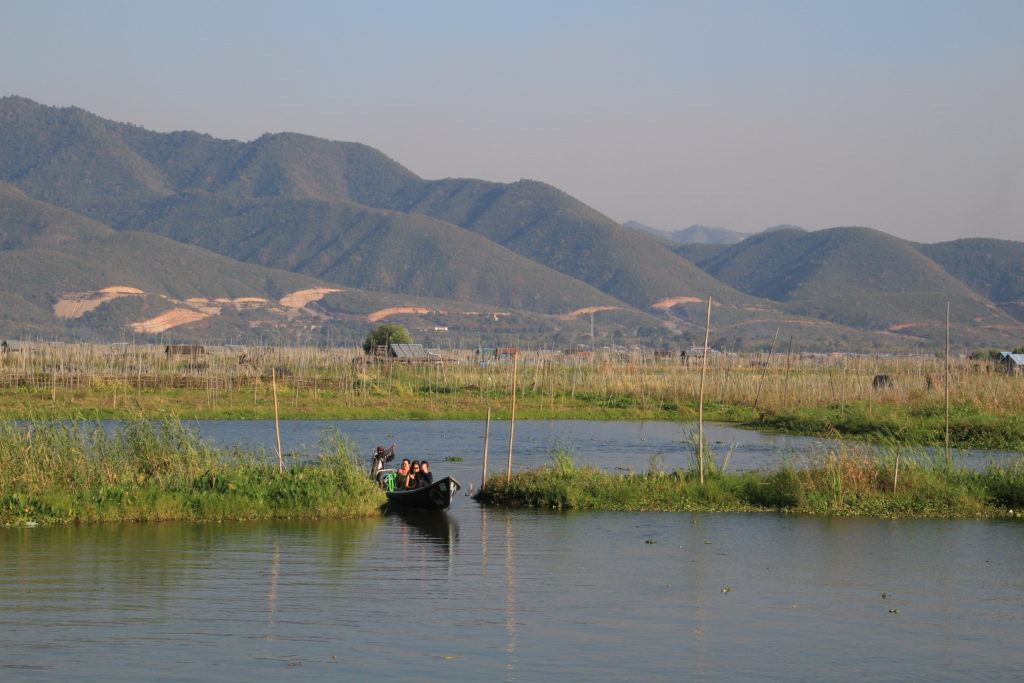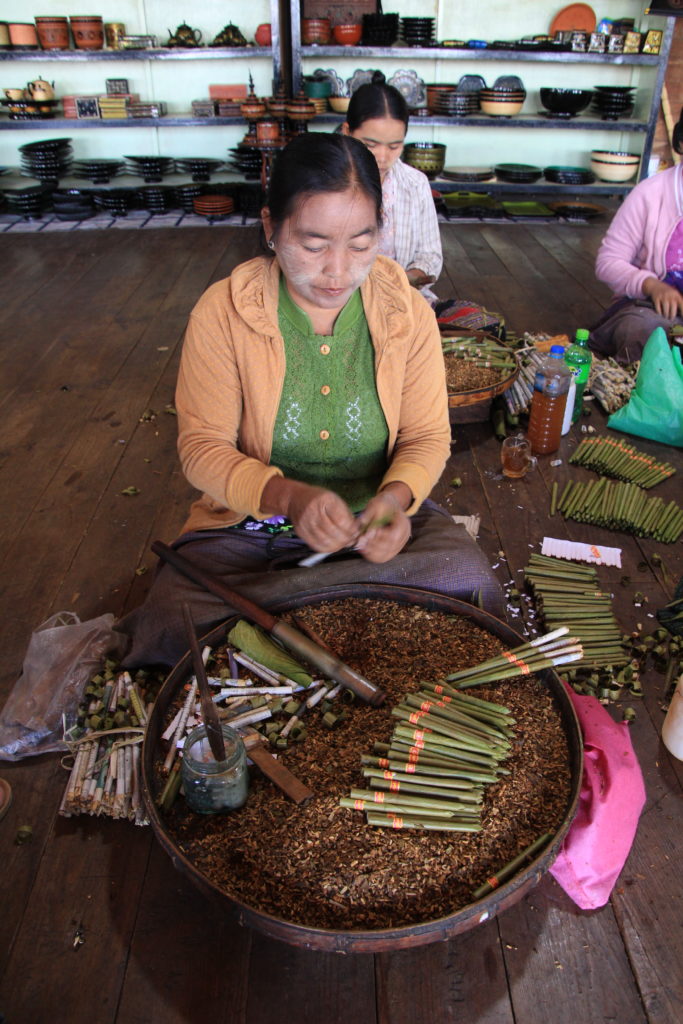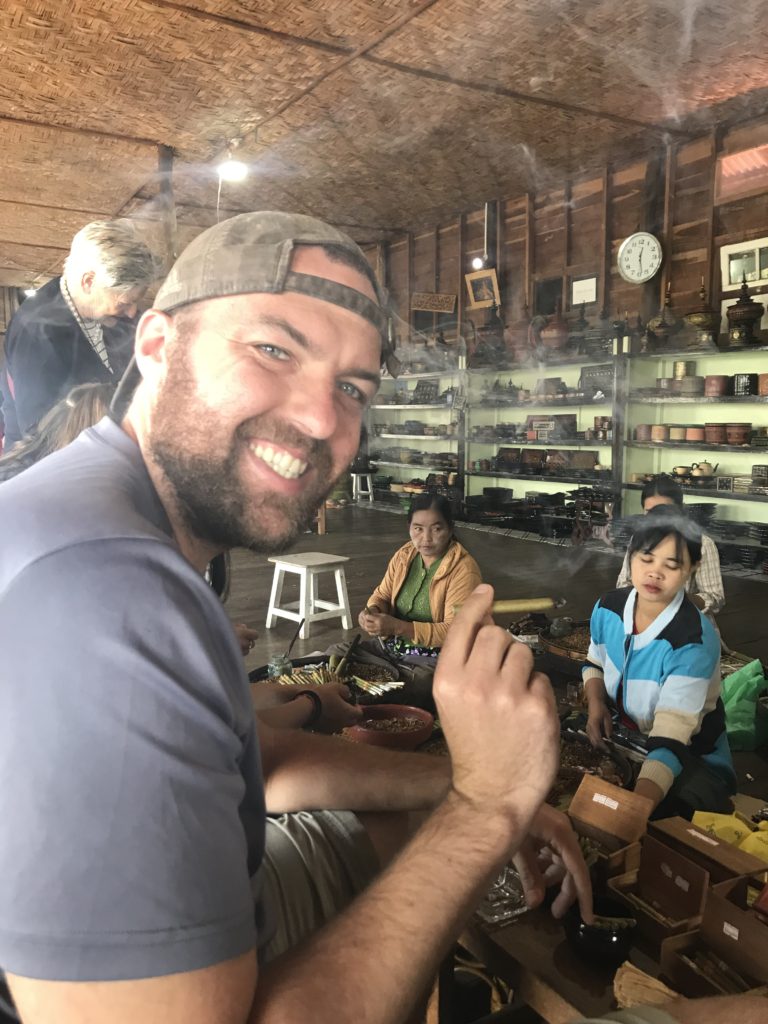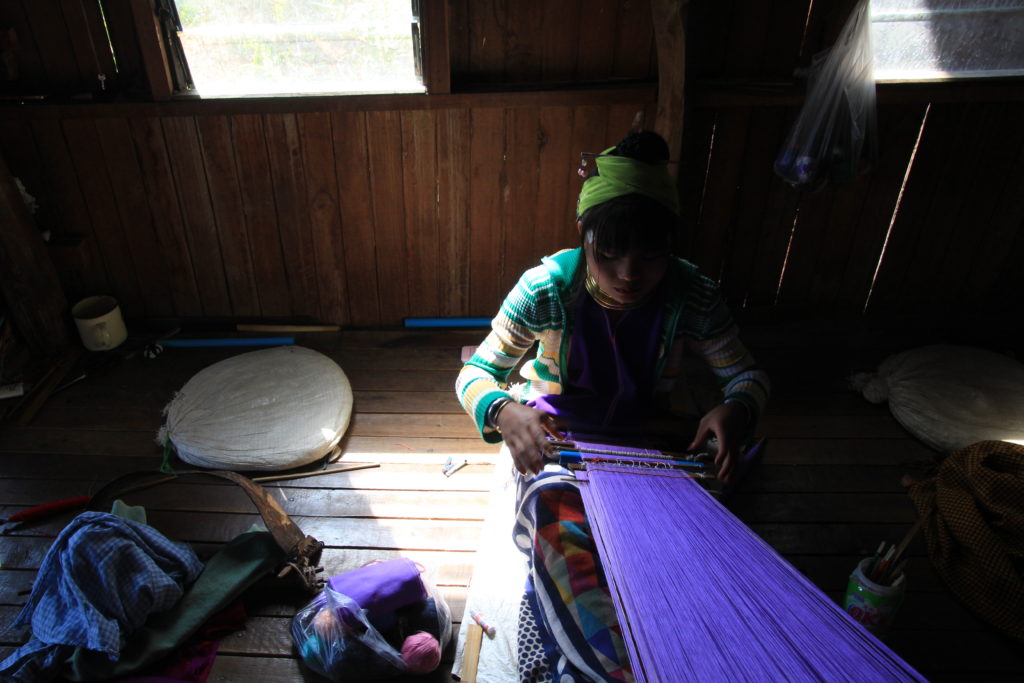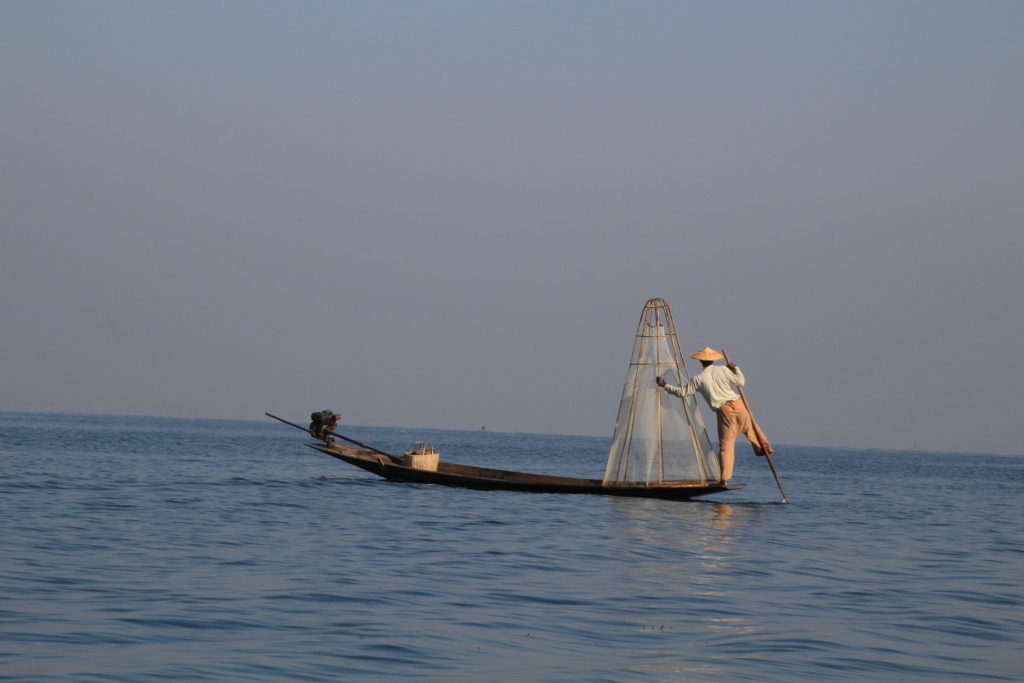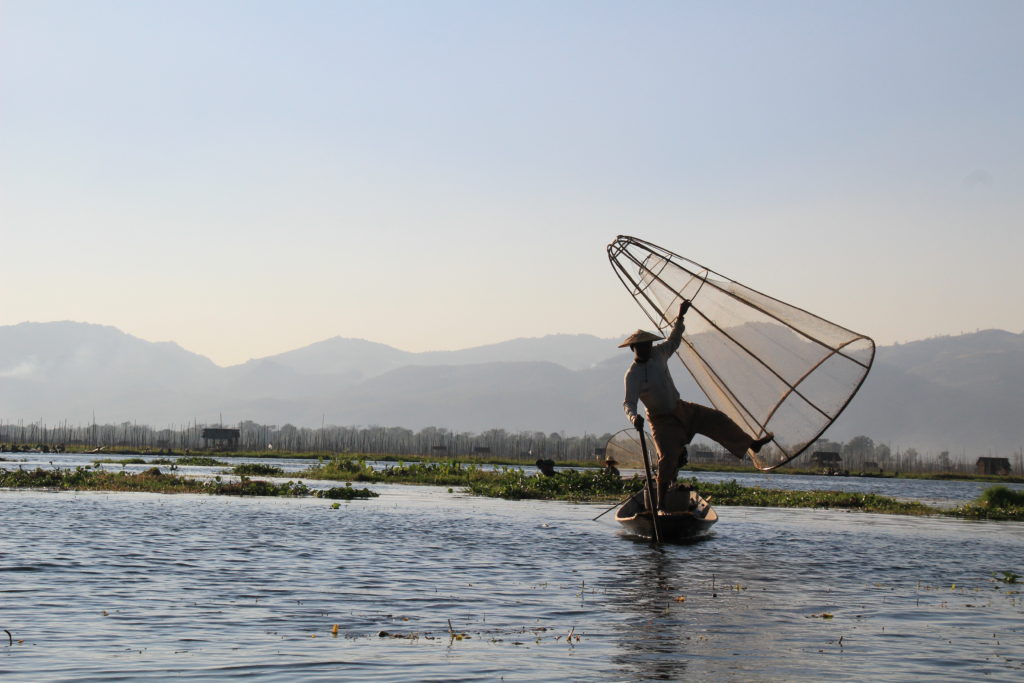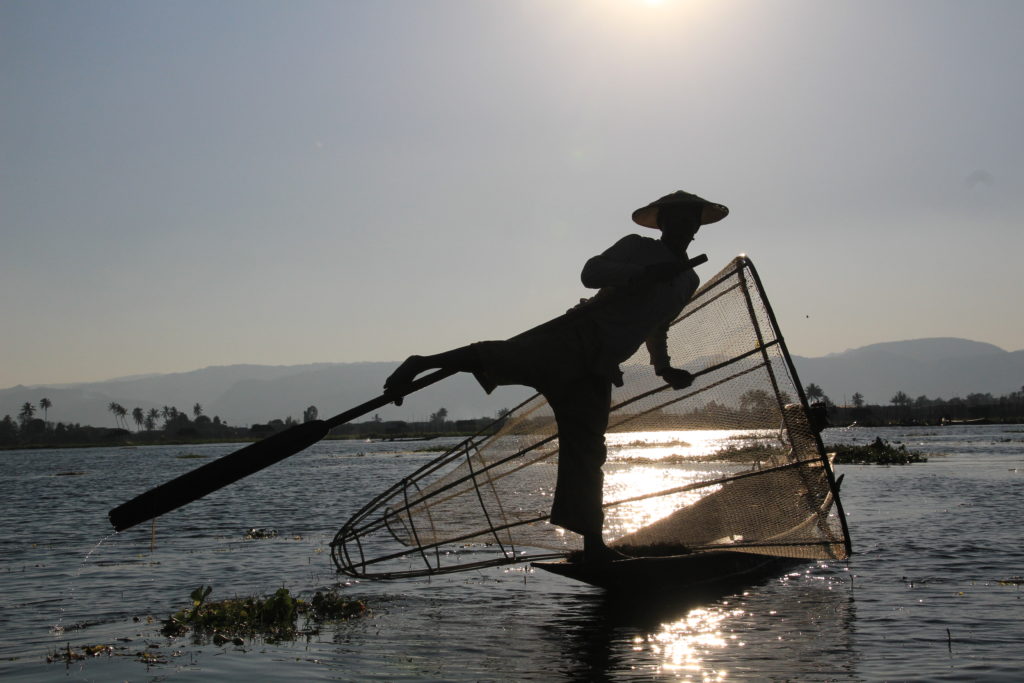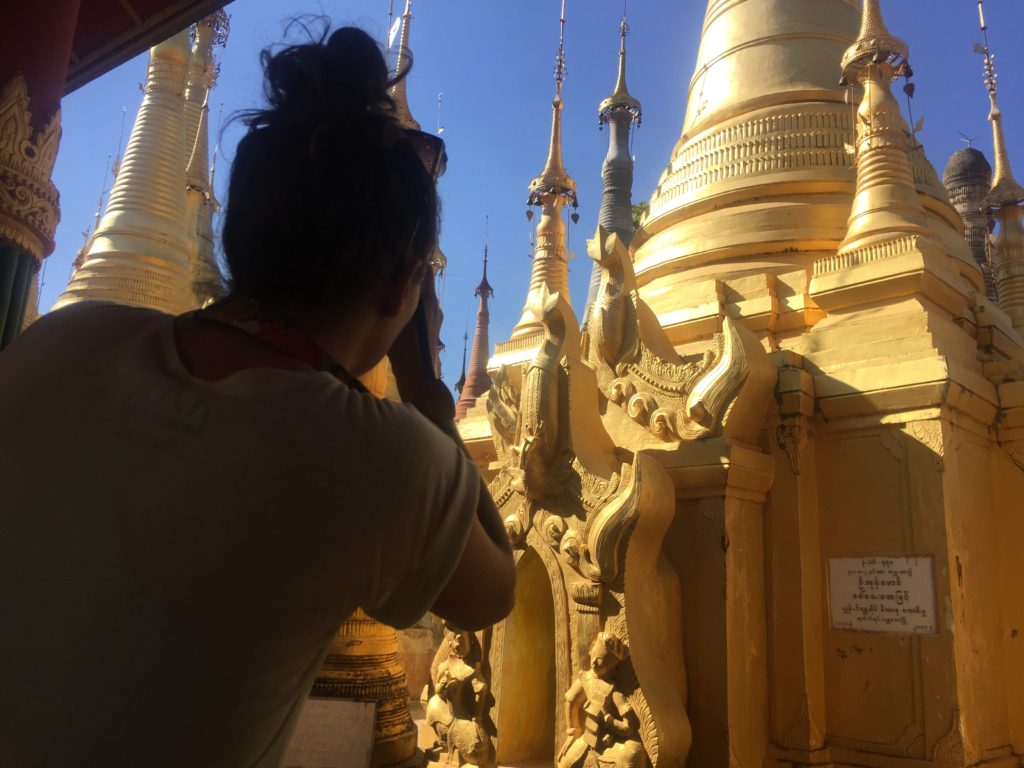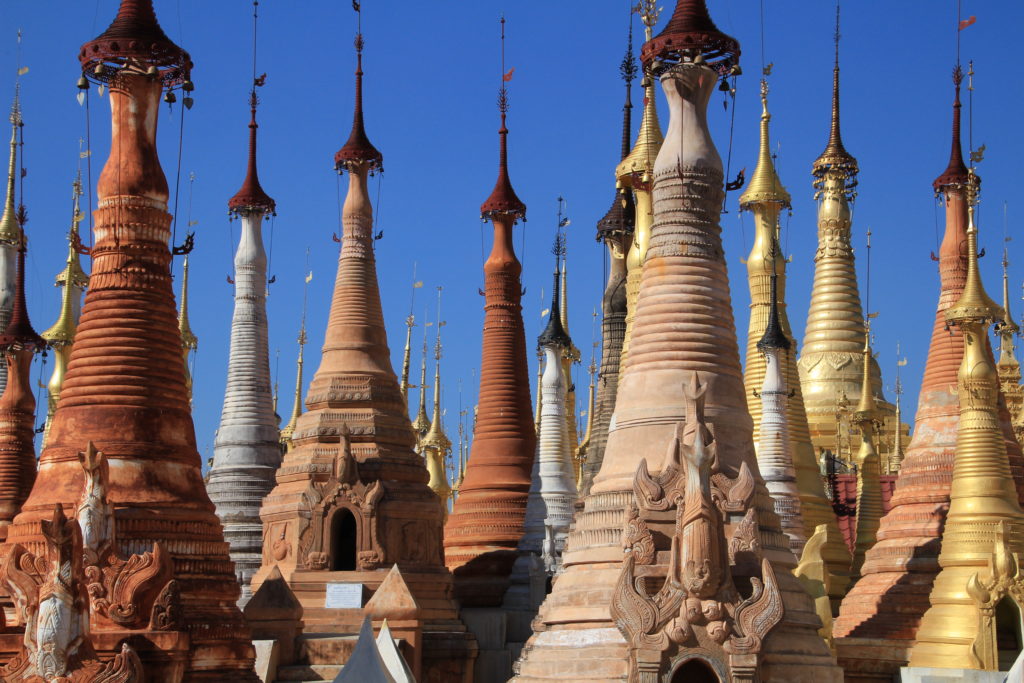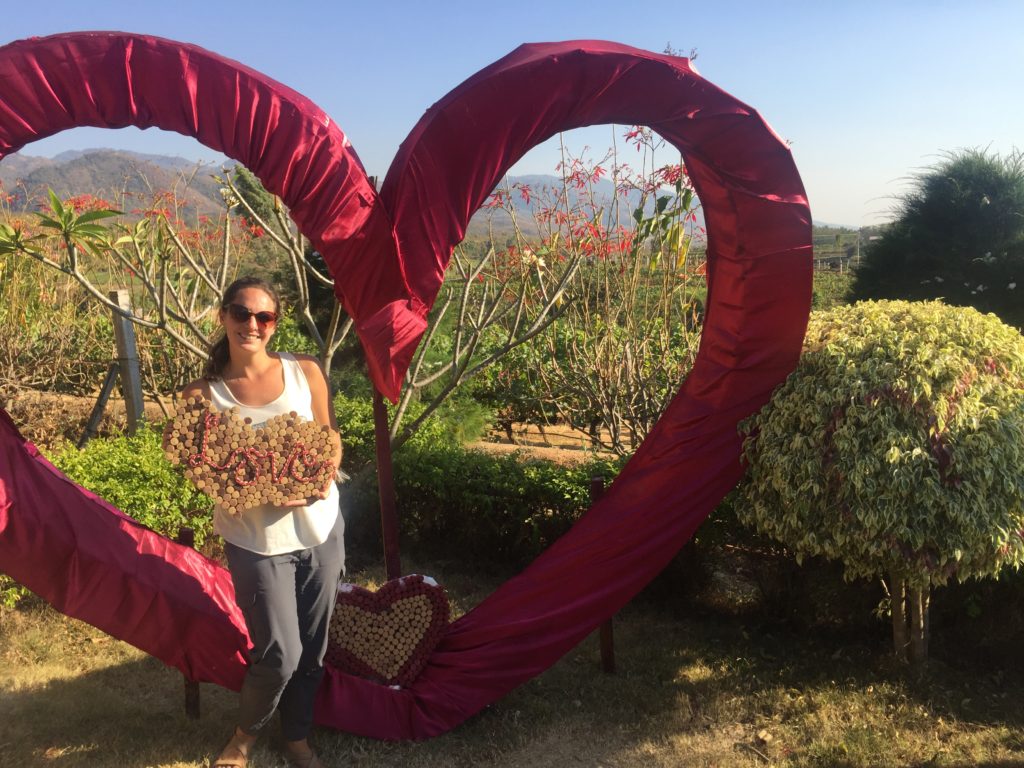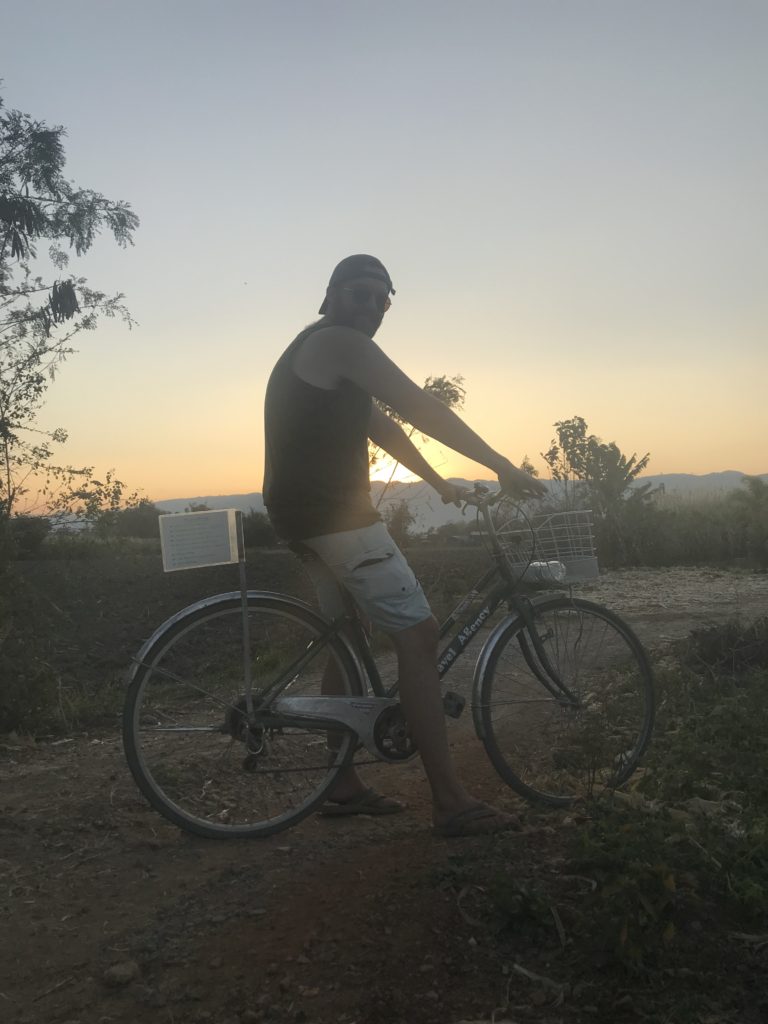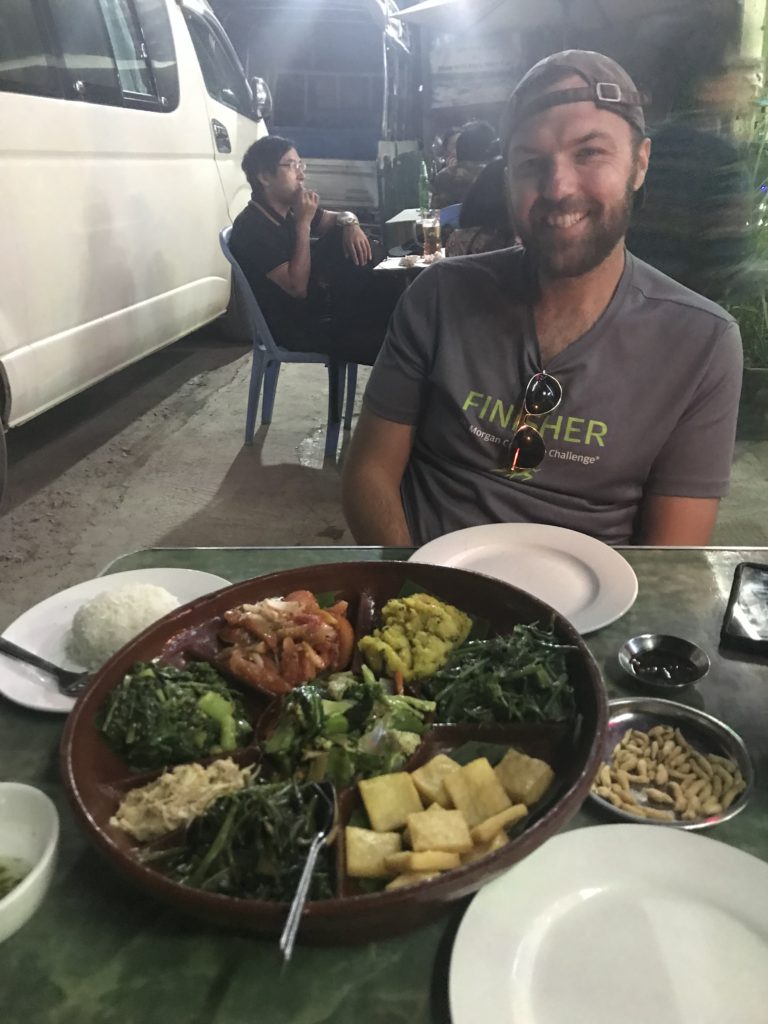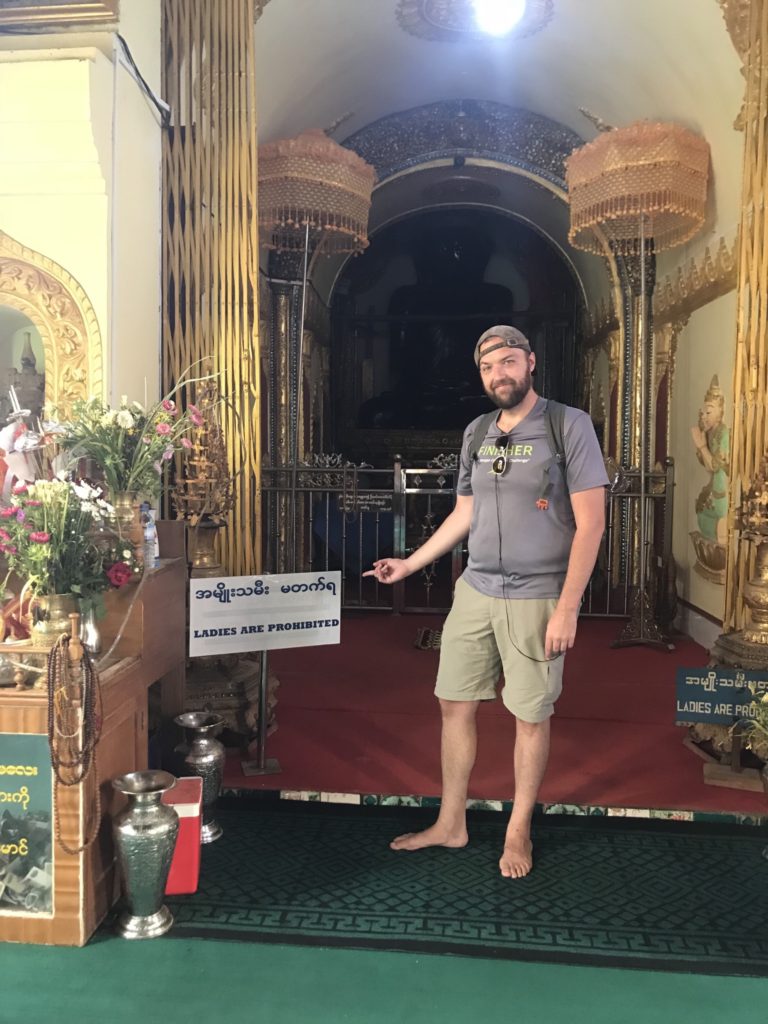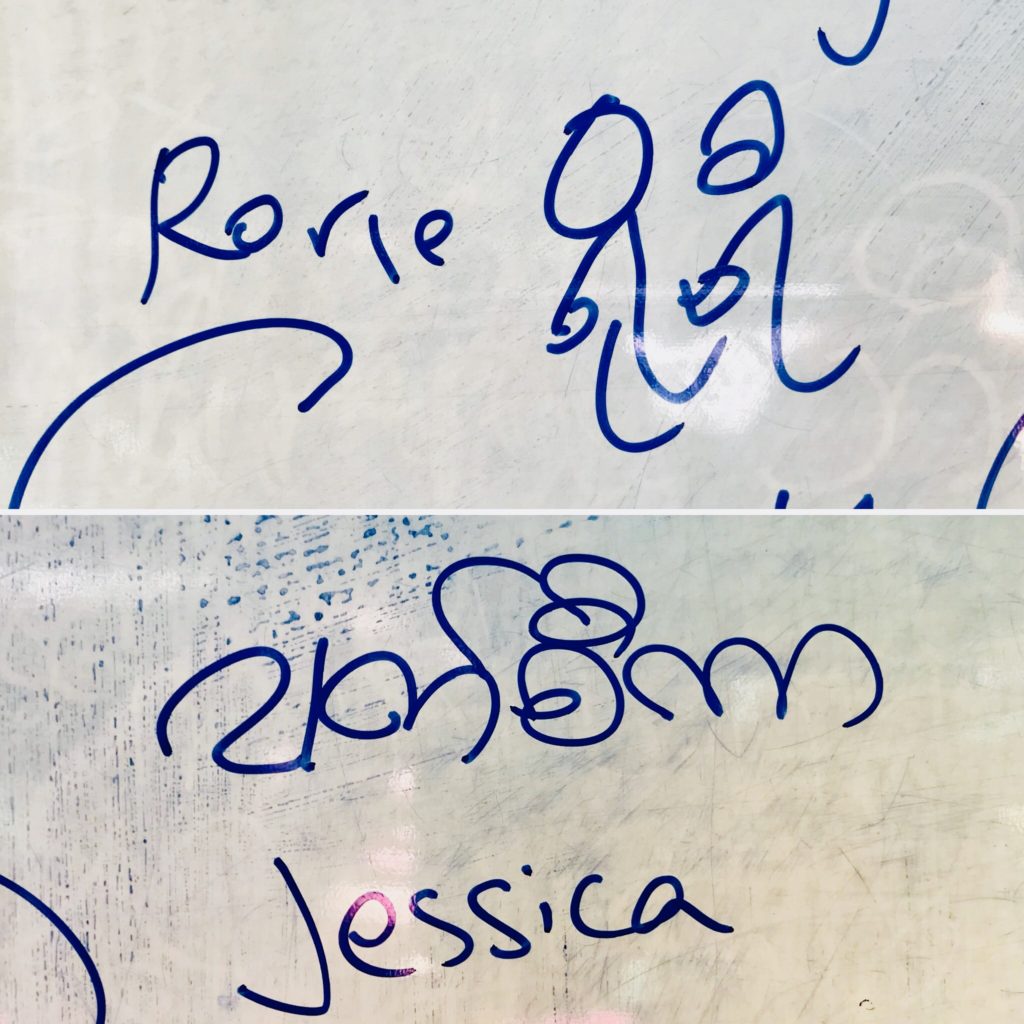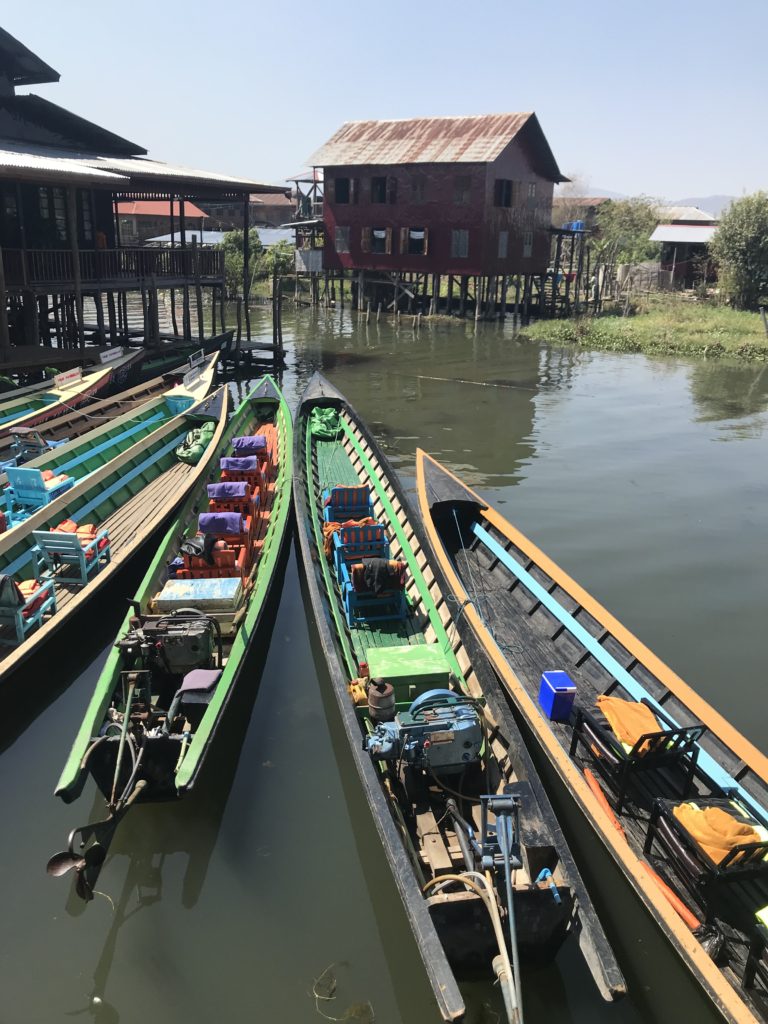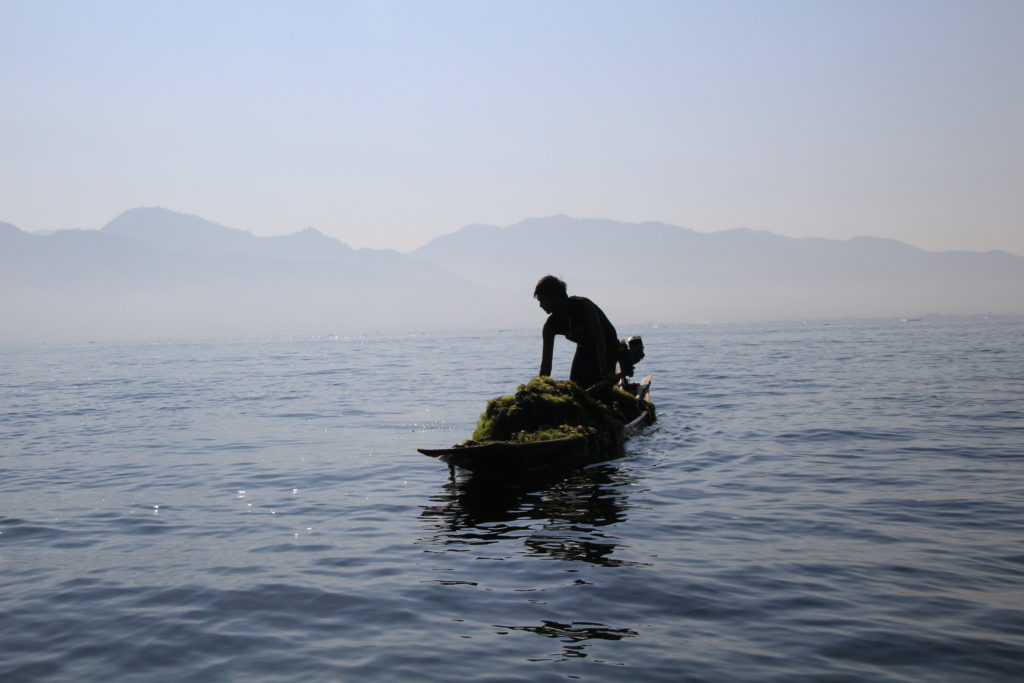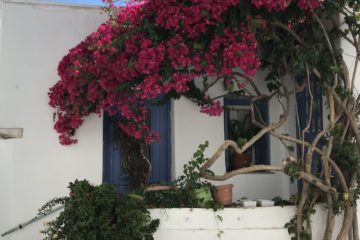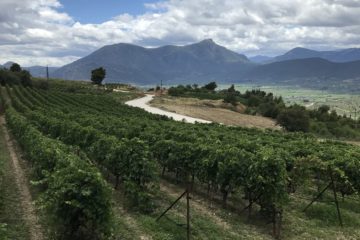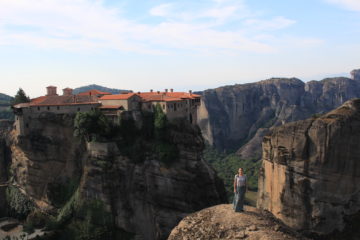Because of the adjustments to our trip arising from my prolonged stomach illness (aka: Myanmar trying to kill me slowly), we commuted straight from Bagan to the town of Nyaung Shwe for the last leg of our Myanmar journey. The bus ride itself was adequately comfortable and lasted for roughly 9 hours, so that was unexceptional. The fun wrinkle this time was that once all the seats in the bus were full, they let additional folks aboard by having them sit on plastic stools in the aisles. The result is that the bus was jam packed with people, with many of the people sitting in the aisle getting sick along the way (with accompanying vomit bags…for 9 straight hours) until we arrived in Nyaung Shwe. [Editor’s note: We were also the only westerners on the bus, so we got the additional fun of getting stared at any time we got on or off the bus at any of the stops.] Great fun. Third world travel for the win!
Nyaung Shwe is a small town located in the mountains in the eastern central area of Myanmar. Because it’s in the mountains, the air is a bit fresher, dryer and thinner in Nyaung Shwe than in other cities. The main appeal of the city, however, is its proximity to Inle Lake, which is one of the largest bodies of water in Myanmar and is full of activities that make it an appealing place to visit in the country. Beyond that, the town of Nyaung Shwe is one of the more relaxed and tranquil towns in Myanmar, so it had its own appeal after multiple weeks of urban environments, hectic traffic and unappealing surroundings. For example, Nyaung Shwe was one of the first places in a longggggg time where we were able to enjoy quiet, leisurely walks around the town at night, just enjoying the silence of the evening and the sky full of stars. That’s something we had previously taken for granted and missed a lot during our travels.
Our first main activity in Nyaung Shwe was to do our Burmese cooking class, since we were rapidly running out of opportunities to do so. Because of my stomach illness, we generally hadn’t taken the time to sample and explore the same broad range of food in Myanmar as we had in previous countries. Thus, we were really looking forward to our cooking class to get some more exposure and knowledge. Our cooking class started with a tour of the local food market by Leslie, our awesome instructor. While the tour wasn’t as informative about food and dishes as some of our previous market tours, it was exceptional in that he provided a lot of information about the Burmese society, social classes and how people function daily in the city – super interesting stuff. [Editor’s note: For example, he would point out stalls in the market making ready-made food and tell us which dishes cost which amounts, and what that meant for poor or wealthy people who frequent the markets.]
As for our cooking class, it was all a bit of a blur! Leslie had us each select one entrée and one appetizer that we wanted to cook, which was followed by a carefully orchestrated chaos where everyone broke up to work on their respective dishes while being supervised, then all sat down together to sample everything. I made a phenomenally delicious river fish curry (so much flavor!), while Jess made a super tasty pumpkin curry dish. The downside of this approach was that we didn’t get to learn as much about how to make all the other dishes, but the upside is that this meal was one of the most flavorful and delicious compared to our previous cooking classes.
The next day, we set out for the crown jewel of our time in Nyaung Shwe – a day on Inle Lake. We hired a boat to take us on the water and agreed to allow a “trainee” guide to join us for a very small fee, mainly so that he could get experience guiding people on the lake. He wasn’t the best guide per se (he spoke super softly and was fairly meek), but he was a really sweet guy. It was super cold in the morning when we first boarded our little boat, but it was awesome because our driver had set up padded chairs with thick, fluffy blankets for us to burrow under while the boat sped through the water. The culture of the lake was super interesting because of how much the villagers had transformed it into a living, breathing city, despite being in the middle of the water. At an obvious level, this included them building a bunch of houses, monasteries, and temples on stilts on the lake. But there were other non-obvious things they did, such as creating “floating gardens” in the middle of the lake where they grow a wide range of vegetables (super cool because they spent years making dirt mounds stretching from the lakebed to above the water, then would run pieces of bamboo through the dirt to ensure they didn’t float away and would grow vegetables atop it).
In addition to seeing these features of life on Inle Lake, we were also able to observe a lot of craftsmen making traditional items on the lake. Some of them were a bit contrived, such as the making of silk clothing (it was cool to watch, but super expensive and clearly still done just for tourists), beautiful parasol umbrellas (purely for aesthetics, since nobody uses them as actual umbrellas) and silversmithing (interesting to watch how they make silver, but clearly just for tourists). But other items we watched people make were definitely authentic to life in Myanmar, including cigar rolling (where I got to try a delicious rum flavored cigar) and boat making. [Editor’s note: Overall I felt pretty conflicted about Inle Lake as a tourist destination. It was beautiful and I loved seeing the floating villages and fishermen who clearly live and thrive there. On the other hand, all the stops along the way at the various handicraft stations were orchestrated and designed solely to get us to part with our western tourist money and guilt-tripping us if we didn’t. After a couple of these stops, where the crafts were beautiful but incredibly overpriced (especially for a backpacker budget!), I started to dread each new station. Every time there was something for sale (aka everywhere), a salesperson would follow along one step behind me, telling me the price of any item I looked at for more than a second. It was really off-putting, and made me far less likely to purchase anything than if I’d been left alone to enjoy the experience a little more. It makes me sad to think that this is what tourism has become for Inle Lake, and that the main impression we’re leaving on the local people is that we show up, say no to everything, and leave again. I hope that as tourism increases, the people of the villages will figure out a way to preserve their local life while till showcasing their talents in a way less focused on consumerism and aggressive sales tactics.]
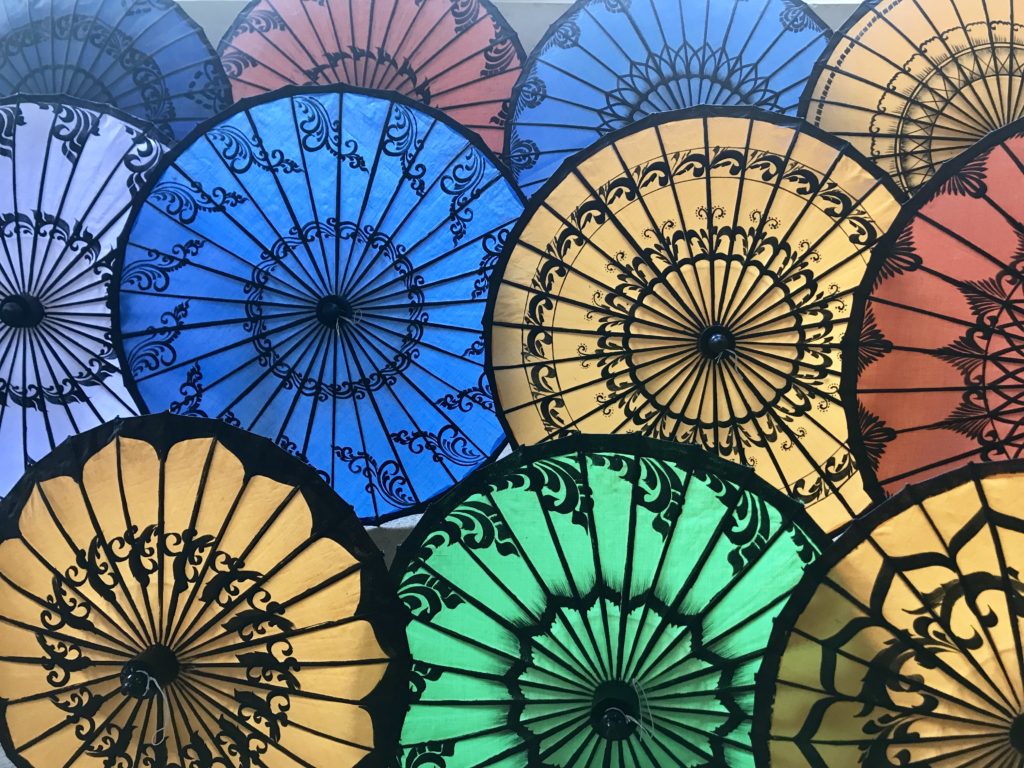
A close up of the beautiful handmade paper umbrellas. If only I could fit a few of these in my backpack!
Our full day on the lake also included us seeing some of the local fisherman, who practice a unique technique where they balance on leg on the nose of their boat – using both hands to cast their net for fish, while their other leg is wrapped around an oar that they use paddle around and balance themselves.
Beyond these features of life on Inle Lake, our tour also included heading to a series of over 1,500 pagodas – known as Shwe In Dein – that was located down an estuary that branched off the main lake. The pagodas were originally built in the 12th century (and expanded in the 18th century) by a king who wanted to foster the religiosity of his citizens in the area. While not singularly spectacular, the pagodas are pretty awesome when viewed in their totality since they are all just crammed in pretty small area (which is all the more visually interesting because the styles of the pagodas vary pretty dramatically). All told, our day on the lake was quite long, but super rewarding and enjoyable.
Our final day in Nyaung Shwe was pretty low key, but it included something that we had been eagerly looking forward to for a while – visiting a local vineyard! Beer and cocktails have been pretty widely available during our travels, but wine has been hard to come by. [Editor’s note: Or way outside our budget when it’s imported from France or South America!] We miss it! So even though we had been warned that the wine was terrible, we decided to still rent pedal bikes and make our way out to the Red Mountain Estate Winery in the mountains near Nyaung Shwe to sample the local wine. All the warnings were accurate, unfortunately – the wine was borderline undrinkable. The view and setting, however, were truly delightful, making the whole outing worthwhile since we spent most of an afternoon on the mountain overlooking the valley as the sun began to set in the distance. The sunset from the winery was absolutely stunning, which is simply par for the course in Nyaung Shwe since the city probably had some of the best sunsets of any place during our travels – brilliant oranges, pinks and yellows filled the sky each night. We’re truly spoiled! [Editor’s note: But we still cannot wait for cheap, good wine back home!]
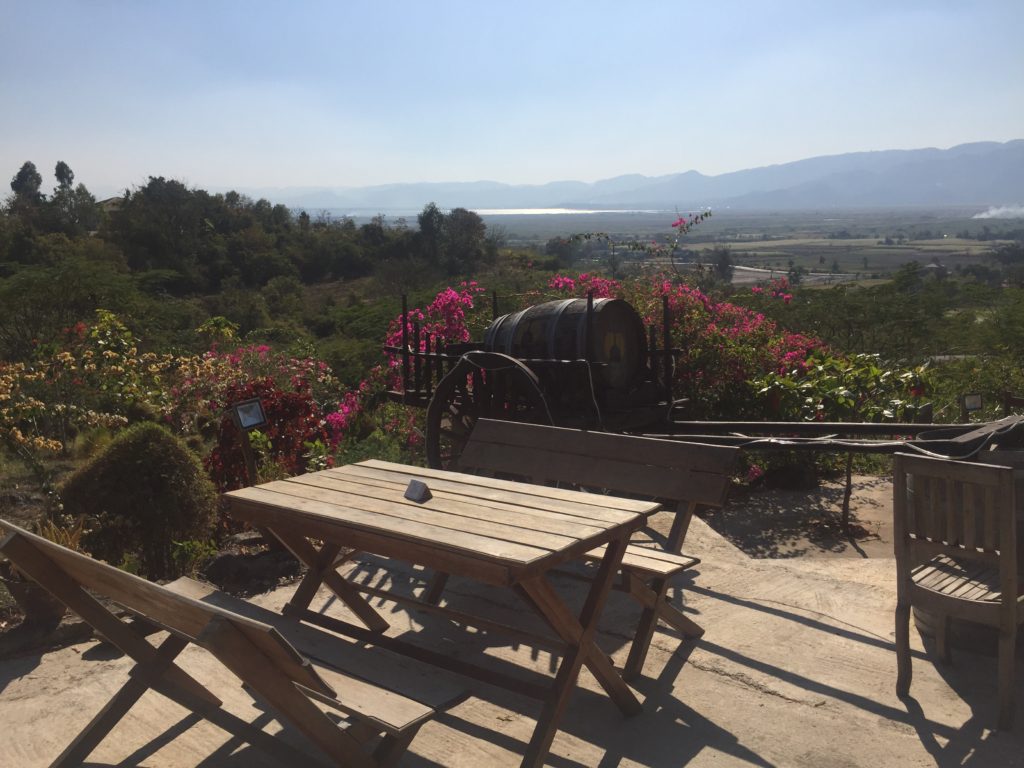
The beautiful view from the winery out over the valley. The silver line in the distance is the lake!
In total, our time in Nyaung Shwe was really enjoyable. The activities in the area gave us more time in nature than we had previous enjoyed, which was super refreshing (both for our souls and our lungs). I particularly liked the setting of the city, since it really reminded me a lot of Salt Lake City, UT – they both have clear, thin mountain air, are surrounded on multiple sides by mountains with a large lake in the distance, and they share similar plant life and dry soil. While not the most beautiful city we visited on our trip, it was probably the best that Myanmar had to offer and we were grateful for it after “roughing it” through less scenic cities for the previous couple weeks.
From Nyaung Shwe, we used our last “extra” day from our cancelled hiking trip to take a 12 hour day bus all the way to Yangon where we would crash for the night and then depart the next day for country #7 in our travels: India!
Bonus pictures from Inle Lake and Nyaung Shwe below!
